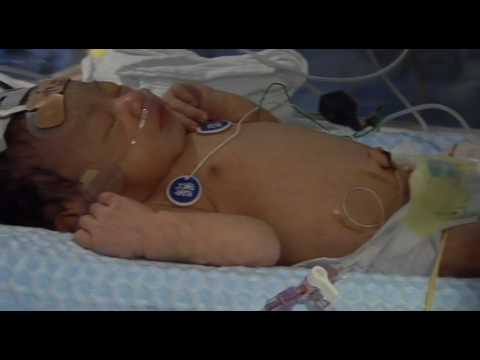
A new research suggests that cooling babies deprived of oxygen at birth improves their chances of growing up without disabilities such as cerebral palsy.
The study, published in New England Journal of Medicine, showed newborns given the treatment were more likely to have higher IQs at school age.
Babies were placed on a special mat and cooled at 33C for three days to help reduce brain injury.
Experts say the study confirms the therapy has long-lasting effects.
It can set off a cascade of processes in the body resulting in the gradual death of brain cells, leaving babies at risk of brain damage and even death.
Until recently there has been no approved treatment to help reduce the aftershocks of low oxygen at birth.

However, a 2009 study of more than 300 newborns showed cooling treatment – known as therapeutic hypothermia – could help reduce brain damage at 18 months.
Researchers think the therapy works by slowing the production of harmful substances in the brain and the rate of brain cell death. But how long these improvements may last has been unclear.
Led by the National Perinatal Epidemiology Unit at the University of Oxford and Imperial College London, a team of scientists revisited these children at six or seven years of age.
They examined the children’s:
- IQ scores
- memory power
- attention spans
- signs of disability
Children who had been cooled as babies were less likely than those who had received standard treatment to have neurological abnormalities and performed better in tests of manual ability.
About 45% of cooled children had no brain abnormalities, compared with 28% of those who had had standard treatment
And some 21% in the cooling group had cerebral palsy, compared with 36% in the control group.
Babies in the hypothermia group were also more likely to have IQ scores above 85.
The simple and relatively inexpensive treatment has been adopted in many countries across the globe.
The cooling treatment showed no influence on survival rates though – a similar proportion (about 30%) of babies in both groups did not survive to school age.
Researchers say the next steps will be to look at therapies that can work in conjunction with therapeutic hypothermia and increase the chances of normal survival.
[youtube fdAKOHbynKY 650]